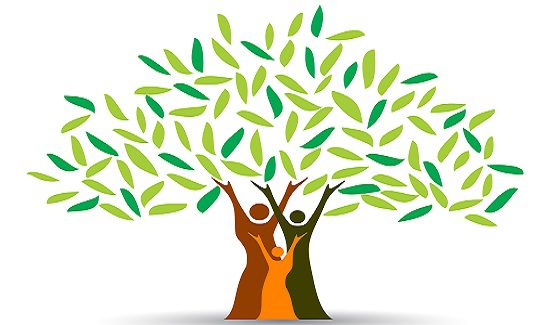
I’m not a violent person.
I live a very peaceful life. I begin and end each day with prayer and meditation. I work for a spiritual organization whose mission is to spread a message of peace and love to all people who are open to hear it. I work with clients as a spiritual healing practitioner, helping them to find God in their hearts.
Aside from that, I live a relatively simple and somewhat isolated life. I work from home, spending most of my days alone with a loving and adoring cat. I don’t have to drive in rush hour traffic – certainly a time of day that inspires violent thoughts. I don’t have the responsibilities of parenthood – a job whose duties inherently bring up conflict. I do not own a television and rarely listen to news – though I manage to hear of the dire events that plague our world.
How can I possibly be responsible for acts of physical violence in the world?
Gandhi taught that we all commit passive acts of violence every day, mostly subconsciously. He taught that the passive acts of violence provide the fuel that ignites and sustains the fires of physical violence around the world.
The physical acts of violence are easy to see. Acts such as fighting, domestic violence, murder, rape, hate crimes, terrorism, wars. These are obvious. They hurt people physically.
The passive acts of violence are not so obvious. These are the acts that do not involve physical force, yet they hurt people. Passive acts include racism, bigotry, discrimination, prejudice, hatred, looking down on people, classifying people, wasting the earth’s resources, and disregard for people who are living in hunger, poverty and deprivation.
-
So when I read the political remarks that scroll across the social media feeds dividing people and pitting one party against another, and I feel anger and hatred and I want to choose a side – well, I certainly have a choice to make. In today’s election campaigns, the dialog is blatantly divisive along lines of race, nationality, religion, social status and more. Do I pass along the post as is with intention to pass along my anger and hatred and bring people over to my side? If so, this is a passive act of violence. It perpetuates the separation.
Another choice may be to try to bring understanding and shed light, passing along the post with intention of bringing a higher perspective that would create acceptance and peaceful discernment. Or I could leave it alone or take the opportunity to find the discernment and acceptance within myself.
-
When I see my neighbor who has a more attractive house and yard than me and I feel envy and drop into self-judgment, this is a passive act of violence against myself and my neighbor. It creates separation and pain. I have made my choices freely, and I’m new to the neighborhood. I live an amazing life for which I am grateful, and I have more than enough.
-
When I use a paper towel once and then throw it away when I could easily and just as effectively use cloth, I am wasting the earth’s resources. This is a passive act of violence against the earth. Though I admit, when my cat pukes up her breakfast, I am grateful for paper towels.
And because I can afford to purchase and overconsume the earth’s limited resources, when I do so without regard for the needs of others, this deprives others, which is violence against humanity.
-
If I dare to think my life is better than my neighbor’s because I meditate and have freedom and peace, I am classifying myself and my neighbor and creating separation between us. This is a passive act of violence.
I’ve come up with four simple examples and I haven’t even left my house yet! As Arun Gandhi pointed out, when he began to examine the passive acts of violence and physical acts of violence in his day-to-day life, he found that the physical acts of violence had limitations. There were not so many.
However, the passive acts of violence grew and grew. And they often fly under the radar. We do not notice them or realize the effects they may have on our lives or the lives of our communities until they erupt into the more obvious physical acts.
Here’s the common thread in these acts of passive violence: If I take for granted the gifts I have in my life, and when I hold the opinion that I deserve what I have because I’ve worked for it and others who don’t have what they need must be lazy or ignorant – these are the passive acts of violence that perpetuate pain and separation. If I live in isolation and disregard for others who are in need, this is a passive act of violence against humanity.
If I attribute my path in life solely to my self-evolved gifts and talents and hard work, this is an ego-centric perspective that fosters entitlement. If I fail to realize that there is a greater force that guides me and provides for me perfectly in accordance with the needs for my soul’s path of evolution, in my opinion I’m missing the point of this life.
Awareness of passive acts of violence & self-responsibility
To help his grandson, Arun, bring awareness to the passive acts of violence he committed in his day-to-day life, Gandhi had him draw a genealogical tree of violence. At the root of the tree was violence, with a branch for passive violence and a branch for physical violence.
Arun’s grandfather had him reflect on his actions at the end of each day, listing the passive acts of violence on one side and the physical acts on the other.
Here’s the key point: We must be aware of our actions and how they affect us and each other before we can bring about change. We cannot create peace in the world if we cannot live in harmony. We cannot practice nonviolence if we do not understand the violence we commit all the time.
Committing these acts does not make us bad people. We are human beings, on a journey of learning and evolution. The important thing is for us to recognize our mistakes and take the opportunity to learn and grow from them. This is how we can realize love and peace in our hearts. This is what draws us to live the reality of love and unity with all things and with God. This is what will bring peace to the world.
Homework for the Heal Your Inner Racist program:
If you are joining us for the Heal Your Inner Racist program to heal racism and bigotry beginning with ourselves, here’s the assignment for today.
Draw a genealogical tree of violence where you can begin to examine your day-to-day actions and belief patterns. Start by selecting a journal, notebook, an online diary or a blog post. Use whatever is easiest and most convenient for you. You’ll want to use this for the next 4 weeks.
Your tree can be as simple as drawing a line down the page and putting the header of PASSIVE VIOLENCE on one side and PHYSICAL VIOLENCE on the other. Then set your intention to tune your radar toward your actions for this day.
At the end of the day, reflect on what happened for you today. List your acts of passive violence, or those that could foster separation, under the header of PASSIVE VIOLENCE. If you engaged in or witnessed acts of physical violence, list them under the header of PHYSICAL VIOLENCE.
NOTE: This is not meant to compile a list of offenses that will bring self-judgment. It is definitely not the intention for you to construct a club to beat yourself up with. We want to bring awareness for the sake of shedding light, understanding and healing.
Remember, we are all human, and as long as we are in human bodies, we will make mistakes that give us lessons from which we can grow. It’s a part of the plan.
You are invited to share your reflections and insights in our private facebook group, Healing Racism and Bigotry. If you are not yet a member, click here and request to join.
If you’re just running across the news of this program for the first time, click here to learn more about it.
Thank you for joining us for this program and doing your part to make the world a more peaceful place.
Blessings and gratitude,
Mastura
PHOTO CREDITS: © Nvnkarthik | Dreamstime.com - Family tree












